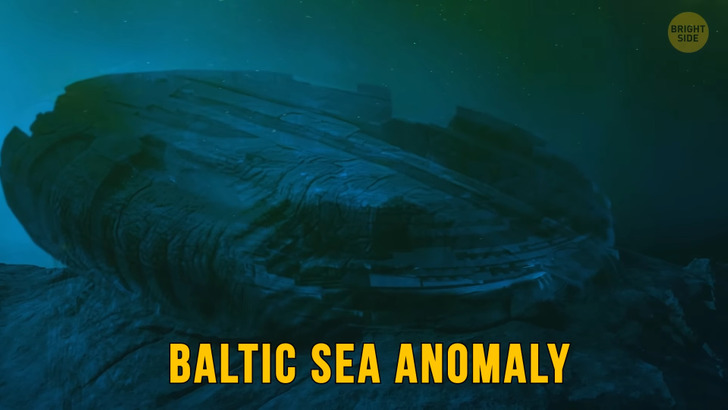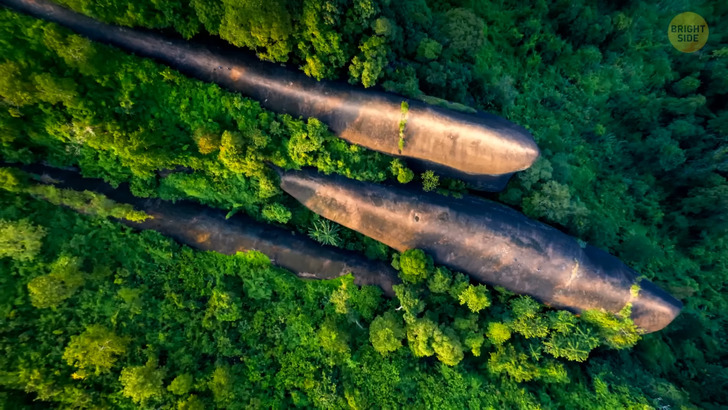10 True Stories So Disturbing, They Could Be Movie Plots

A group of underwater explorers stumbled upon a mysterious discovery in June 2011. It was a strange something resting deep under the freezing waters of the Gulf of Bothnia, in the Baltic Sea region. The Baltic Sea Anomaly, a weirdly shaped feature 210 feet long and 26 feet tall, was discovered 300 feet below the surface using sonar by Ocean X.

The team claimed that their electrical equipment stopped working when they got to within 650 feet of the mysterious object. Anything electric that was taken down just stopped working altogether over the site. Moving away from it let the electronics turn back on. It remains a mystery, but the unique shape leads to many claims that it could be a part of a former sunken city like Atlantis or even a mysterious object from outer space that crashed through the ice at some period.
The scientists studied samples collected from around the site and determined that it could be a simple glacial deposit carved out from moving glaciers during one of the ice ages. The Anomaly is just a piece that was leftover, undisturbed for thousands of years. It hasn’t been explored enough yet for a true answer. Off the southern tip of Japan lies the Yonaguni Formation.
A local diver first noticed these formations in 1986 while searching for new dive sites for tourists. When he saw the large steps that resembled a Pyramid, he decided he must have discovered an underwater city. Archaeologists believe that the structures belong to a long-forgotten fabled civilization — just like Atlantis — that had vanished beneath the waves thousands of years ago.
Structures inside the pyramid that resemble stonework like castles and a stadium are connected by roads and what seem to be large walls all the way around. The marks in the stone show quarry work with faded faces and rocks sculptured into animals. But other experts say that the symmetry of the rocks is not as perfect as reported and that it appears to be solid rock rather than carved blocks. For them, it’s just a coincidence. Research is going on to determine if it’s truly a lost civilization or nature just having a little fun.

The Lincoln Memorial is gigantic in size, and the view of the Reflecting pool mesmerizes the visitors. For enthusiasts that love history, searching for the famous carved lettering mistake in the walls is also part of the journey. “With high hope for the future, no prediction in regard to it ventured,” except the sculptor accidentally spelled future with an “E” instead of an F!
There is a chamber in the building’s foundation that’s also worth a visit. You can even find a cave-like structure where stalactites form from the dripping water through the limestone through a secret door. There’s graffiti from unknown construction workers on the supporting columns inside this cavernous space.
Around the Northern tip of Queensland, Australia, an uncommon cloud formation that rolls through at dawn scares the tourists. These clouds are called Morning glory, a very rare type of cloud that seems to almost roll across the sky, looking like a massive tube. Measuring up to 600 miles long, this phenomenon is the result of an updraft pushing through the cloud, creating a rolling appearance. They believe that moist, cool air at the back of the clouds causes them to sink downward, almost dropping onto the land.

In northeastern Thailand —— 466 miles away from Bangkok —— a 75-million-year-old rock formation sticks right out of the mountains and into the forest. Looking like a pod of whales swimming together, this place is called Three Whale Rock. Millions of years ago, this area was just a desert. But archaeological evidence from the Cretaceous period — when the T. rex and Triceratops were out there — shows that the land was changing quite dramatically at that time.
It’s believed that the sandstone mountains were lifted by plate tectonics and erosion by the Mekong River. It resulted in the strangely shaped rock formations that stand out today. Anyone willing to hike the network of trails can reach the place and find waterfalls, and a wide variety of plants and animals. From the very top of these huge monoliths, the beaches of Mekong, the mountains, and forests stretch in all directions.
One of the most talked-about books of the 20th century was an ancient text that no one could read. The Voynich manuscript was discovered in 1912 and is the world’s most mysterious manuscript. Looks like it’s withholding many secrets from the world. The handwriting inside is of an unknown language or code.
It’s heavily illustrated with strange pictures of unknown objects and zodiac symbols. The drawings of different plants are the most intriguing thing about the book, as none match any plant species on Earth that scientists are aware of. A professor of Applied Linguistics in England claimed to have deciphered some of the characters in the book, but as of yet, everything is still intelligible.

Jellyfish lightning sprites are electrical discharges high in Earth’s atmosphere. They’re associated with powerful thunderstorms, but they’re not the same clouds that give us rain. These sprites occur at 30–50 miles above the ground, in the mesosphere.
Artificial lights at night make it a lot more difficult to see this faint lightning, but it can be well over 30 miles wide. The red sprites are a type of cold plasma discharged above a thundercloud, turning red with the nitrogen in the atmosphere. They work as a balance of the lightning charges between storm clouds and the ground below.
When freezing temperatures hit Orchards in Michigan, the local early birds woke up to unusual ice sculptures hanging off tree branches. Ghost Apples. Perfectly formed ice apples. Finding one is very difficult as everything has to be perfect for this to occur—and it’s got to be freezing cold. This rare weather phenomenon causes the apples to freeze on the branch, with rain coating the apples in a thin layer of ice. The apples then thaw and leak out like applesauce, leaving just the beautiful ice shell behind.

The Gateway Arch in the city of St. Louis is just like looking back in time. What most visitors don’t know is that the Arch also provides a glimpse back to its construction. The Arch is the tallest national monument in the United States, standing at 630 feet high and 630 feet wide. It was built to withstand earthquakes and high winds and can sway up from 1 inch to 18 inches in a 20-mile-per-hour wind! It also contains the stories of over 700,000 people from St. Louis kept in a time capsule that was welded to the very top.
Found in any snow-covered mountain area—like the Rocky Mountains—the wind, temperature, snow, ice, and moisture have to all work together for you to see the phenomenal rings known as “snow rollers”. Starting with quite a thin layer of damp snow on the ground, it needs to sit on top of ice or powdered snow.
Then a strong enough breeze has to move a layer into a donut shape, and gently start rolling down a hill, just like a snowball. Once it stops rolling, it can be the size of a baseball, or as large as a car tire. It all depends on how strong the wind was blowing that day. A newly formed snow donut won’t stay around for very long as the dust is quite light.

The Antikythera Mechanism is a type of ancient computer that’s baffling the scientific community with its extraordinary mechanics. A Greek ship sank off the coast of the island of Antikythera some 2,000 years ago. It was only discovered in 1900 by sponge divers.
Archaeologists started sorting out the artifacts retrieved from the wreckage when they came across an object that didn’t seem to fit into the time it was created. The machine seemed to follow time, the movements of stars, eclipses, moon phases, and even countdowns to events like the Olympics with amazing precision. No mechanism would come close to this until the 14th century, when they started building geared clocks in Europe.
Archaeologists In Turkey believe they might’ve found the oldest known architectural construction in the world. It’s over 10,000 years old, according to the experts. Found in ancient farming communities, these monolith pillars were up to 18 feet high. They were probably used for social events and rituals, but not much is known about them.
Some of these large stone structures were human-shaped, with animal carvings and stone rings built into them. Recently, archaeologists have found rectangular buildings around the site. The communities that built these monuments were the start of the move into modern civilization.











